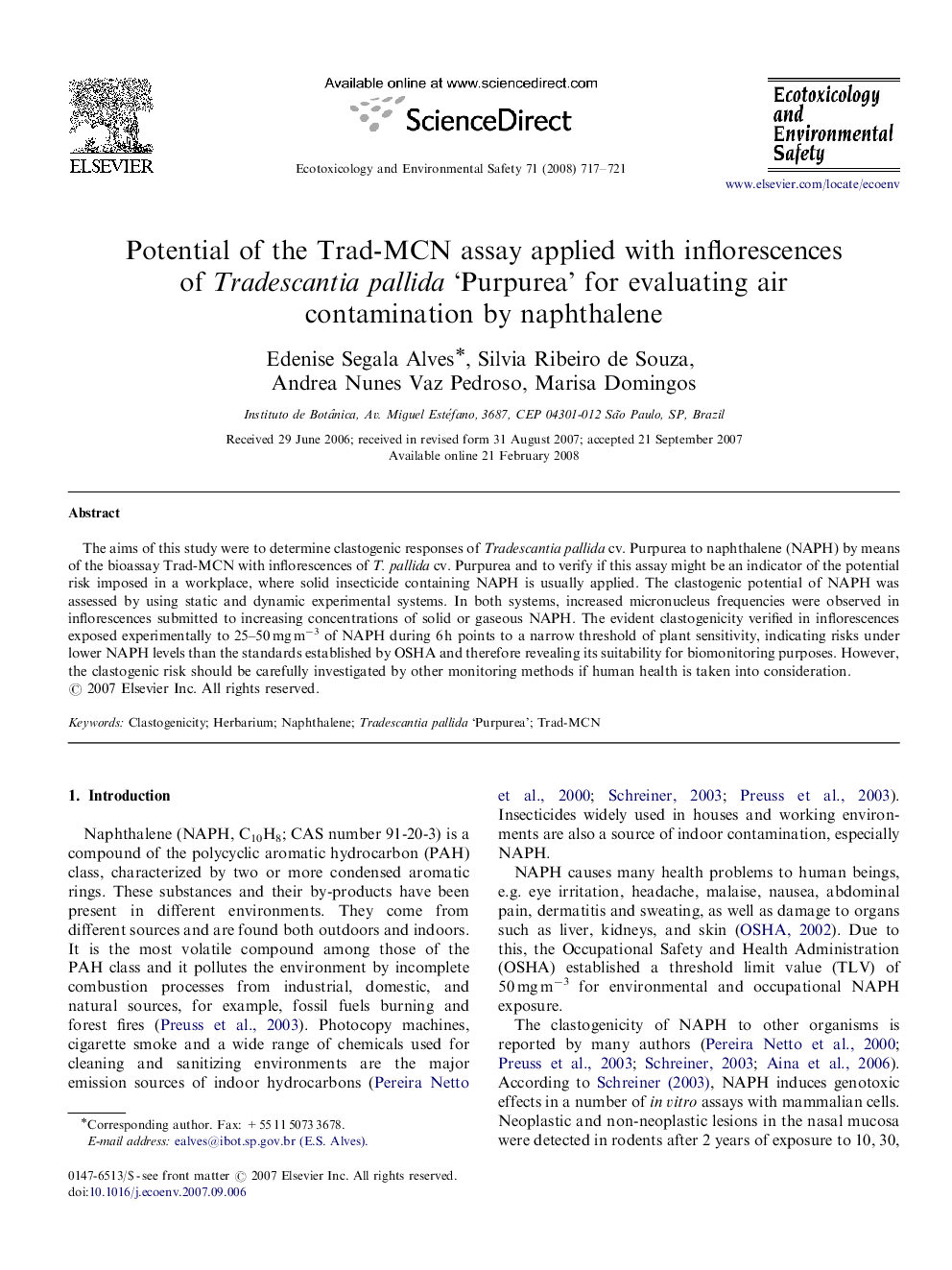| Article ID | Journal | Published Year | Pages | File Type |
|---|---|---|---|---|
| 4421807 | Ecotoxicology and Environmental Safety | 2008 | 5 Pages |
The aims of this study were to determine clastogenic responses of Tradescantia pallida cv. Purpurea to naphthalene (NAPH) by means of the bioassay Trad-MCN with inflorescences of T. pallida cv. Purpurea and to verify if this assay might be an indicator of the potential risk imposed in a workplace, where solid insecticide containing NAPH is usually applied. The clastogenic potential of NAPH was assessed by using static and dynamic experimental systems. In both systems, increased micronucleus frequencies were observed in inflorescences submitted to increasing concentrations of solid or gaseous NAPH. The evident clastogenicity verified in inflorescences exposed experimentally to 25–50 mg m−3 of NAPH during 6 h points to a narrow threshold of plant sensitivity, indicating risks under lower NAPH levels than the standards established by OSHA and therefore revealing its suitability for biomonitoring purposes. However, the clastogenic risk should be carefully investigated by other monitoring methods if human health is taken into consideration.
